This article is more than 1 year old
Space elevators, vacuum chutes: What next for big rocket tech?
How boffins hope to escape long shadow of the V2
More bangs for your bucks
In the 1960s, ballistics engineer Gerald Bull persuaded the Canadian and US defence departments that it might be possible to fire a payload into space from a very large gun.
Cue Project HARP (High Altitude Research Project), which rolled out a US Navy 16in (406mm) piece to lob projectiles over the Atlantic from a base in Barbados.

The HARP gun in action, and abandoned today
With an initial barrel length of 20m, later extended to 40m, HARP eventually managed to propel a 180kg slug at 3,600m/s to an altitude of 180km.
The project was cancelled shortly after this 1966 high, and Bull went on to develop the Iraqi-funded "Project Babylon" supergun, ostensibly a means of getting satellites into orbit.
Bull's 1990 assassination brought Project Babylon to an abrupt halt, but US scientists continued to work on the spacegun concept.
In 1992, the US fired up its Super High Altitude Research Project (SHARP) light gas gun. SHARP worked by igniting methane to drive a piston which in turn compressed hydrogen, all within a pump tube. At the required moment, the pressurised hydrogen was released behind a projectile sitting in the launch tube, which exited the 10cm diameter, 47m-long "barrel" at tremendous speed.
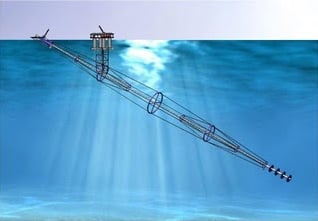
Quicklaunch
SHARP was able to accelerate a 5kg projectile to 3,000m/s. A proposed giant version of the gun - the "Jules Verne Launcher" named in honour of the man whose novel From the Earth to the Moon described a cannon-launched manned Moon mission - never got off the drawing board.
The light gas gun isn't entirely dead, though, as SHARP scientist Dr John Hunter continues to fly the flag with the aquatic Quicklaunch.
The Quicklaunch system will overcome one hurdle facing ground-launched projectiles - that of air resistance slowing their progress through the atmosphere - by deploying rocket motor boost at altitude.
What it won't be able to do, though, is put people into space. Jules Verne's vision didn't encompass the effects of enormous G-forces on the human body, which would relegate any space gun to lifting inanimate objects.
What we need, therefore, is a gentler way to fly, and what better than to float skywards using the lifting power of gas?
This sedate approach relies on the lighter-than-air properties of hydrogen or helium to provide lift. Last year, the Red Bull Stratos mission saw Felix Baumgartner soar to 39,068.5m under a substantial helium-filled globe, so what's to prevent a balloon drifting ever upwards into orbit?
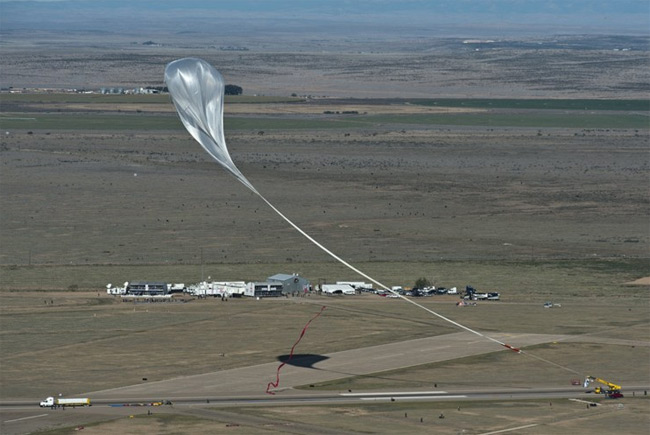
The Launch of the Red Bull Stratos in 2012
Well, for starters, you've got the fact that as you ascend, the lifting gas expands, meaning you've either got to have a gargantuan envelope to start with, or an envelope capable of stretching to gargantuan proportions, or you'll have to vent some gas, meaning loss of lift.
Wind conditions in the lower atmosphere are severe, so the larger your balloon at ground level, the more vulnerable it becomes as it rises.
To address these issues, the volunteers who form the US's JP Aerospace have drawn up a three-stage "Airship to Orbit" concept, with each of the system's stages designed to operate in its particular operating environment.
Firstly, The "Ascender" hybrid "atmospheric airship", using a combination of buoyancy and aerodynamic lift, is steered by electric-driven propellers to around 42,000m.
There, it docks with a floating "Dark Sky Station", which is the jumping-off point for the third stage: "an airship/dynamic vehicle that flies directly to orbit".
In order to get any kind of lift at that altitude, the orbital vehicle needs to be quite large - over 1.6km long, according to JP aerospace. Once it's ascended to 60,000m, electric motors gradually accelerate it to orbital velocity.
It's an audacious plan, but hardly more bold than the Lofstrom loop - a 2000km-long maglev orbital launch track theoretically capable of flinging manned vehicles of up to five tonnes into orbit.
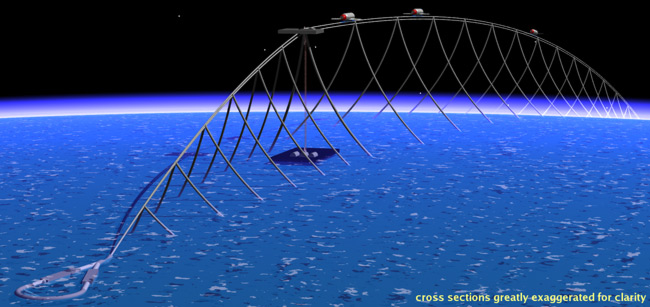
The Loftsrom Loop
The loop is formed by a sheath containing an iron tube which spins longitudinally within the sheath, causing it to rise from the ground into a tethered arc. When a payload is placed onto the loop, it's magnetically levitated and driven forwards, gradually gaining speed until it's lobbed into orbit.
Related maglev concepts include a circular configuration, around which payloads are accelerated until they can be projected spacewards.
On a more realistic note, NASA has mulled the use of magnetic levitation in hybrid launch technologies, where it might be deployed to give vehicles that first kick.
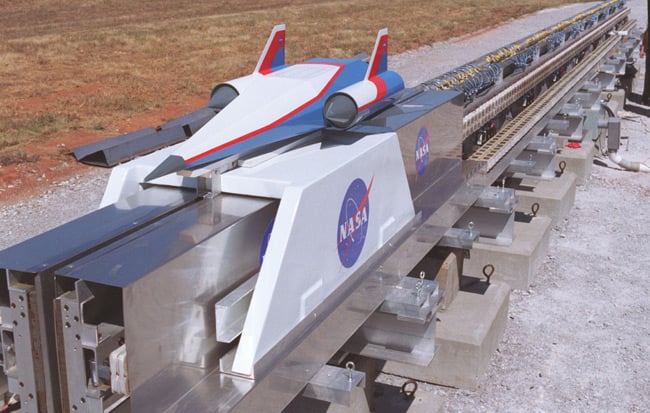
NASA's concept of a maglev launch platform
These might propel scramjet-powered vehicles to the velocity necessary for their engines to cut in, without the need for conventional rocket-powered assist.
The StarTram is an advanced version of the maglev-assist idea, in which spacecraft would accelerate in a vacuum up a tube to an altitude of 22km, after which conventional motors would do the rest.
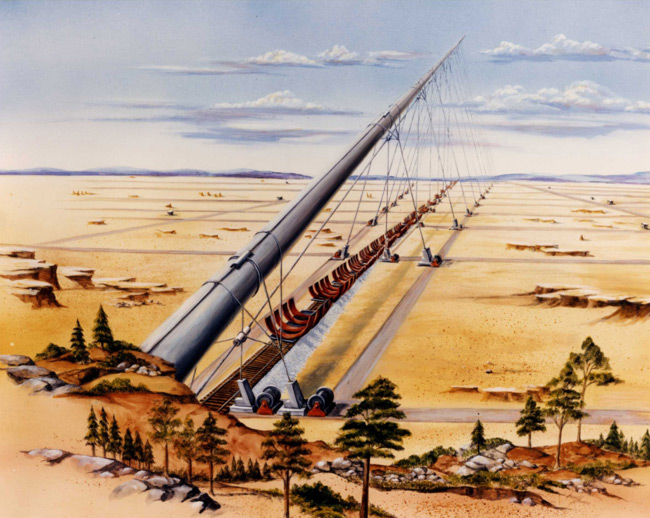
StarTram
The big downside of maglev launchers is the quantity of juice required to drive them. At Loftsrom Loop scales, just keeping the thing elevated would require an estimated 200MW, meaning quite shocking electricity bills for the operator.
